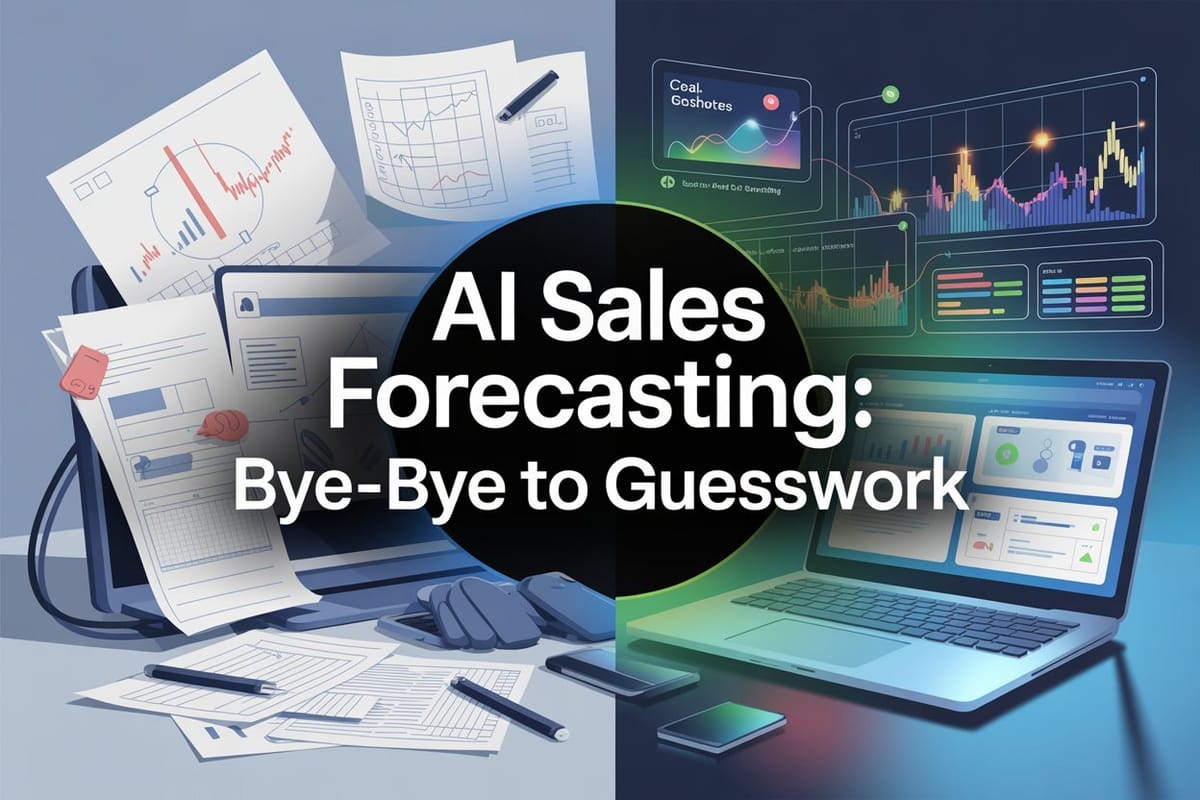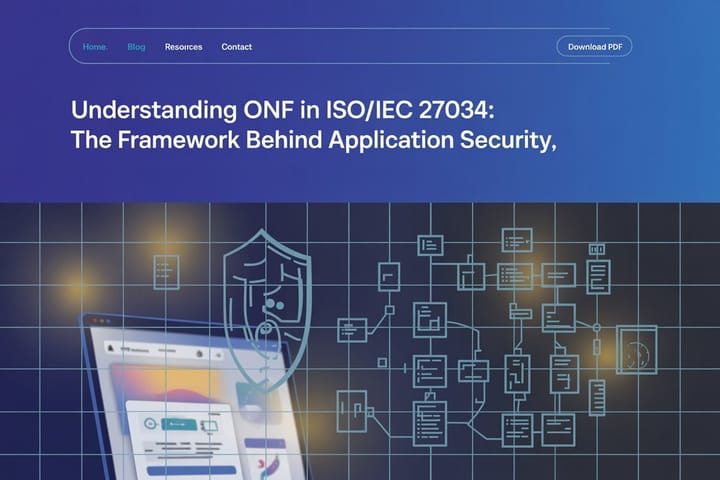AI Sales Forecasting: Bye-Bye to Guesswork

Less concerned with how AI models forecast trends, customer churn, and revenue accurately.
Sales forecasting used to be a mix of experience, spreadsheets, and positive guessing. Sales executives used to glance at pipelines, recent history, and intuition to make guesses about revenue. The outcome? Missed targets, surprise at the last minute, and a reactive rather than proactive sales culture.
That is rapidly changing.
Thanks to the power of Artificial Intelligence (AI), forecasting is no longer a guessing game. By analyzing historical data, buyer behavior, and real-time signals, AI can predict revenue, detect deal risks, and even identify churn before it happens.
In this blog, we’ll explore how AI-powered forecasting works, what makes it more accurate than traditional models, and how it can reshape your sales strategy from the ground up.
Why Old-Fashioned Sales Forecasting Can't Get It Done
Forecasting has never been easy. Even the most experienced sales leaders find it difficult to factor in latent variables, human bias, and volatile markets.
Traditional forecasting pitfalls include:
- Subjectivity and Bias
Reps overpromise deals in the pipeline, and managers use anecdotal reporting rather than facts. - Static Reporting
When numbers are entered into a spreadsheet, they're already stale. - Inconsistent Data Entry
CRMs typically have incomplete or inaccurate data, and therefore any hand-drawn forecasts derived from them are compromised. - Lack of Context
Predictions seldom include competitor moves, buying committee activity, or macroeconomic changes.
This is where AI makes a difference.
How AI Forecasting Works
AI forecasting applications apply machine learning to large volumes of structured and unstructured data from sources such as:
- CRM platforms
- Historical sales data
- Email interactions
- Meeting recordings
- Market trends
- Customer support tickets
- Marketing campaign engagement
These models continually learn and adapt as new data arrives. Instead of being based on static assumptions, they detect dynamic patterns, raise alerts on changes in buyer behavior, and deliver real-time forecasts.
Key Capabilities of AI in Sales Forecasting
1. Predictive Revenue Forecasting
AI applications analyze historical win/loss results, velocity of deals, and engagement signals to predict future revenue with much greater precision than spreadsheets. These predictions are updated in real-time and take into account your pipeline's current health.
2. Deal Risk Detection
With behavioral and engagement metrics (email replies, meeting rates, buyer sentiment), AI can identify deals that are likely to stall—well ahead of your team's recognition. That gives sales leaders the ability to redeploy resources before it's too late.
3. Customer Churn Prediction
By looking at product usage, support interactions, and renewal behavior, AI models will even predict which customers are most likely to churn. This enables customer success teams to respond fast enough to retain valuable accounts.
4. Trend Detection
AI reveals nuanced purchasing trends by regions, sectors, or personas that would otherwise remain undetected. It enables teams to adjust messaging, targeting, and product positioning.
5. Real-Time Adjustment of Forecasts
Rather than waiting until the last day of the month or quarter, AI revises forecasts as new data arrives—giving you a real-time picture of your business at all times.
Advantages of AI-Based Sales Forecasting
1. Enhanced Accuracy
AI eliminates human bias and uses actual data to forecast results. This results in greater predictability of forecasts and less surprise at the end of the quarter.
2. Improved Resource Allocation
With good visibility into what's probable to close, sales managers are able to allocate top reps to high-priority deals, redirect marketing assistance, or prioritize attention where needed.
3. Preemptive Deal Coaching
When a deal is marked as "at-risk," managers can act early—coaching reps on strategy, identifying roadblocks, and keeping the opportunity on track.
4. Cross-Team Alignment
AI forecasting platforms usually connect with marketing, customer success, and finance systems—providing all departments with one view of revenue projections.
5. Time Savings
Forecast updates are automated, taking away the hours of gathering data, generating reports, and aligning spreadsheets—leaving your team free to sell.
Top AI Applications for Sales Forecasts
1. Clari
Clari is a leader in AI forecasting. It integrates with your CRM and communications tools to build real-time, data-driven forecasts. It has the following features:
- Deal movement tracking
- Rep activity insights
- Pipeline health visualizations
- AI-powered forecast recommendations
2. InsightSquared
InsightSquared retrieves data from your CRM and offers sales forecasts, dashboards, and performance analytics. It uses AI to detect win/loss trends and predict outcomes.
3. Salesforce Einstein Forecasting
Integrated into Salesforce, Einstein employs AI to offer opportunity scores, close probabilities, and pipeline health alerts. Its integration natively makes it easy for Salesforce users.
4. Gong Forecast
Gong's forecasting software doesn't just look at numbers—it examines sales conversations for risk indicators, urgency, and buyer intent—adding a more qualitative aspect to your forecasts.
Real-World Example
Case Study: B2B SaaS Company Reduces Forecast Variance
A SaaS organization utilizing Clari to predict pipeline results reduced its forecast variance from 22% to a mere 5% over two quarters.
Through the alignment of rep activity, deal movement, and buyer behavior, they were in a position to:
- Correctly predict quarterly revenue
- Identify risky deals 2 weeks sooner
- Train reps better on actual data
Things to Consider Before Using AI Forecasting
Prior to diving into an AI solution, evaluate your readiness by inquiring:
- Is our CRM data clean and consistent?
- Are reps entering activities and notes correctly?
- Do we possess historical sales data for a minimum of 12–24 months?
- Are we willing to adjust our existing forecasting workflows?
AI models are only as strong as the data they're trained on. Without team adoption and data hygiene, even the cleverest algorithms will fail.
Final Thoughts
Sales forecasting no longer needs to be based on hunches and guesswork.
With AI-based platforms, your projections can be dynamic, data-driven, and radically more accurate.
By anticipating customer churn, revenue patterns, and pipeline health, AI enables you to plan ahead—instead of responding to surprises.
The bottom line?
AI won't only enhance your forecasting—it will revolutionize how you operate your sales organization.
Ready to Remove Guesswork from Your Forecasting?
If you're interested in adding AI to your sales arsenal but don't know where to start, partnering with aicerts we can assisthere in coursemonster.
Let's schedule a consultation with our team, and we'll assist you in selecting course to start your Ai in sales journey.




Comments ()